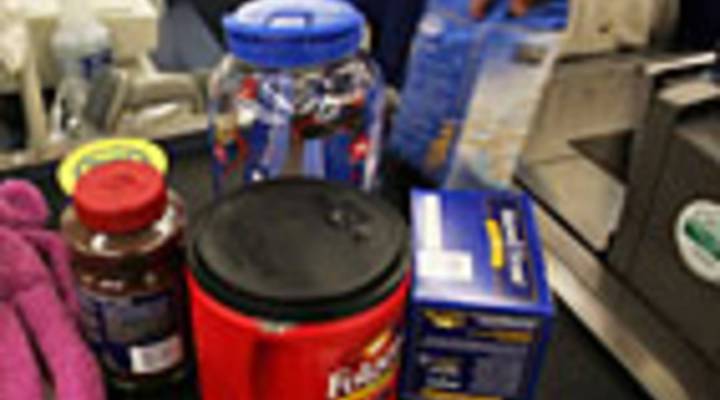
Surprises in the self-checkout lane

TEXT OF STORY
MARK AUSTIN THOMAS: Technology is often used to make our lives more convenient. Think Automated Teller Machines or those new auto checkout lines springing up in many supermarkets. Stores have installed them to save money, but as Ethan Lindsey reports there have been some unforeseen side effects.
ETHAN LINDSEY: When you walk up to the front of the store nowadays, there may be a new choice of how you can checkout: With person or without.
The unmanned checkout line can save millions in labor costs. Which is why airlines, supermarkets and places like Home Depot all seem to be installing them as fast as they possibly can.
Greg Buzek is the president of IHL Consulting. He recently did a study on auto checkout lines in the grocery business.
GREG BUZEK: Self checkout has typically gotten a bad rap. People have looked at it and said, ‘Oh they’re just trying to cut jobs with self checkout.’ Actually it’s quite the opposite and evidence of that is when is the last time you went into a supermarket and saw all 16 lanes setup and ready to take customers. They’re simply aren’t enough people to take those jobs.
But the range of opinions on the lines vary by customer.
CUSTOMER 1: It’s just easier and you don’t have to deal with any other problems, you just do it yourself, and you’re in and out fast.
CUSTOMER 2: It seems like more of a hassle, like I seen people use it and they just keep swiping and swiping. And the machine’s not working and I’m like ah I’d just rather go to the register and have her deal with it.
CUSTOMER 3: You know it sounds stupid, but I’m always afraid I’m gonna make a mistake. I’m kind of technologically challenged. And I just like talking to a person.
Buzek says the difference of opinion is one of the surprising problems that self-checkout has presented.
Another? People don’t buy as many impulse items like gum, or magazines, because they aren’t waiting in line as long and they have to concentrate on checking their own groceries.
BUZEK: We found that the men, if they’re looking at an impulse item, more likely to go hunt for it and search for it. The impulse item drop was only 27 percent for men. However for women, it was over 50 percent.
Buzek says for the young, self checkout gives them the individual control they crave. But his study also found it was popular with the elderly, because they get to see the exact price of every item and the exact savings of every coupon.
Baby Boomers seem to be the slowest adopters.
So the decision to install the machines means stores have to calculate the advantages of how, where and when to put them in.
BUZEK: The first concern that retailers have when they put it in there is that their customers are ripping them off. The reality of the situation is that most losses or theft come from the employees themselves. One of the things that we’re realizing is actually that customers are more honest than the people that are working there.
But this is a high-stakes game, so stores are already adapting.
You’ll soon notice new items at the front of the store. Home Depot has started to sell food and drinks right at the auto-register to see if customers respond to that.
And regional supermarkets like Kroger and Fred Meyer’s have come up with a new kind of impulse buy: They’re putting rotisserie chicken and fresh baked bread up front to catch customers’ noses.
I’m Ethan Lindsey for Marketplace.
There’s a lot happening in the world. Through it all, Marketplace is here for you.
You rely on Marketplace to break down the world’s events and tell you how it affects you in a fact-based, approachable way. We rely on your financial support to keep making that possible.
Your donation today powers the independent journalism that you rely on. For just $5/month, you can help sustain Marketplace so we can keep reporting on the things that matter to you.


















